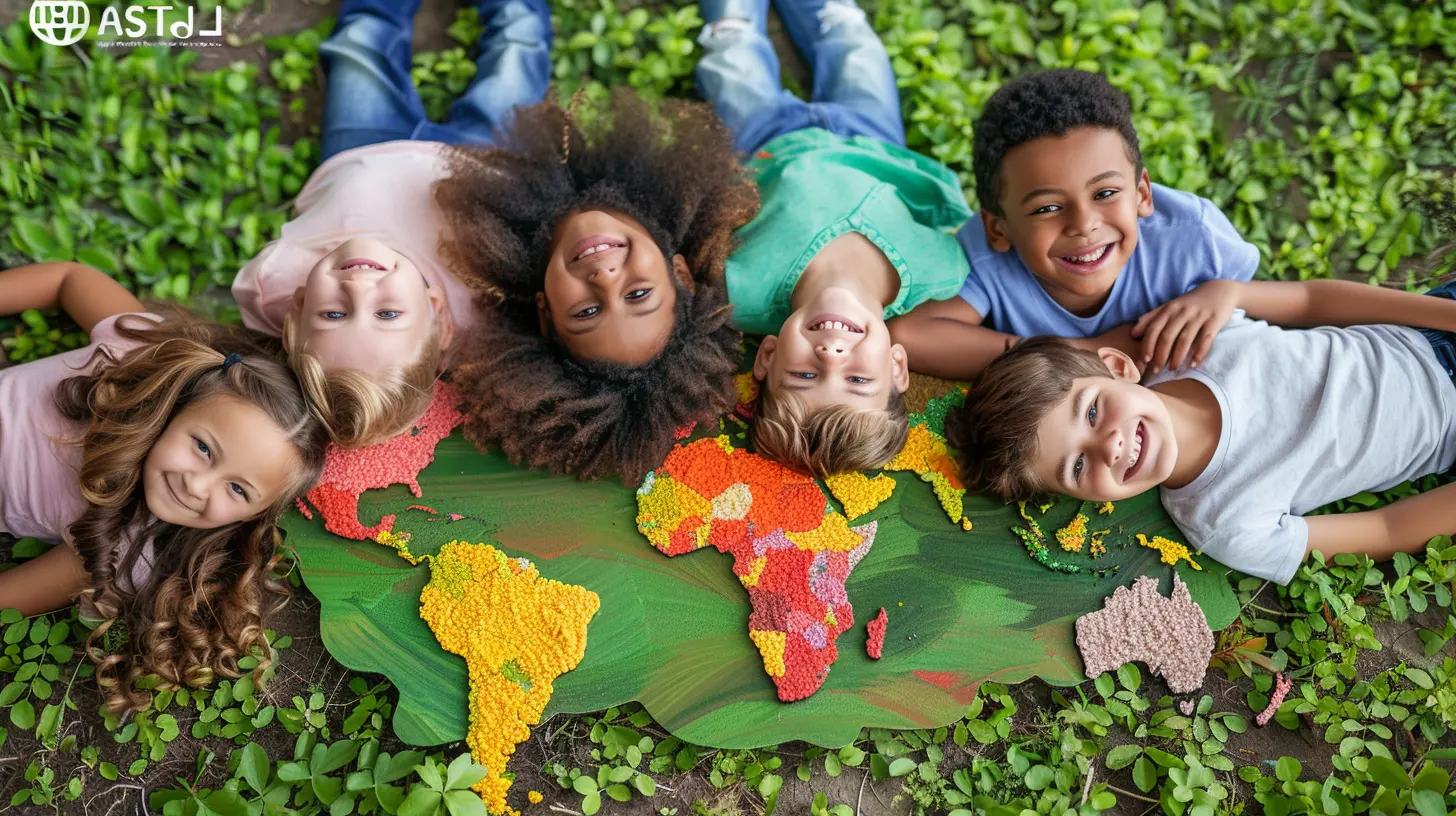Global Learning Networks: Opportunities for Educators and Students
23 June 2025
Education is no longer confined to four walls and a chalkboard. With the rise of digital resources and global connectivity, learning has transformed into an interconnected experience. Enter Global Learning Networks (GLNs)—a game-changer for both educators and students. But what exactly are they, and why should you care?
Imagine having access to the best teachers, resources, and peers worldwide at your fingertips. Sounds incredible, right? That’s exactly what GLNs offer. Whether you're an educator looking for fresh teaching strategies or a student eager to broaden your knowledge, these networks open doors to limitless opportunities.
Let’s dive into how Global Learning Networks create a world of possibilities for learners and teachers alike. 
What Are Global Learning Networks?
At their core, Global Learning Networks are digital or community-driven platforms that connect students, teachers, and institutions across the world. These networks facilitate collaboration, knowledge exchange, and innovation regardless of geographic location.Think of it as a virtual classroom that extends beyond countries and continents—a space where students from New York can work on projects with peers in Tokyo or where a teacher from Canada can share insights with an instructor in South Africa.
GLNs come in various forms, including:
- Online educational platforms (Coursera, edX, Khan Academy)
- Social learning communities (LinkedIn Learning, Facebook Groups, Reddit forums)
- International academic partnerships (Erasmus+, Fulbright Program, UNESCO Learning Initiatives)
- Virtual classrooms and conferences (Zoom-based lectures, TED-Ed Clubs)
No matter the format, the goal is the same—to bridge gaps in global education and promote lifelong learning. 
Why Global Learning Networks Matter
Education should be inclusive, diverse, and borderless. That’s where GLNs shine. These networks remove traditional barriers and bring about opportunities that were once unimaginable.1. A Goldmine of Knowledge for Students
Want to take a Harvard course from your bedroom? Or work on a collaborative project with students from five different countries? GLNs make it possible.With these networks, students can:
✅ Gain access to world-class resources free or at little cost
✅ Engage in real-world projects with students globally
✅ Develop critical thinking, cultural awareness, and collaboration skills
✅ Learn beyond their traditional school curriculum
Learning isn’t just about textbooks anymore. It’s about experiencing diverse perspectives and tackling real-world problems alongside international peers.
2. A Professional Growth Hub for Educators
Teachers also reap enormous rewards from Global Learning Networks. Whether they’re looking to sharpen their skills, discover new teaching methods, or simply connect with like-minded educators, these platforms are a goldmine.Some key benefits include:
🔹 Professional development through online workshops and webinars
🔹 Access to innovative teaching methodologies used worldwide
🔹 Collaboration with experts and thought leaders
🔹 Opportunities to publish, research, and present findings globally
Think of it as a never-ending teacher’s lounge—but instead of casual gossip, it’s a space to exchange groundbreaking ideas and bring global best practices to the classroom. 
How Global Learning Networks Benefit Education at Large
Besides personal growth, GLNs pave the way for broader educational advancements. Here’s how:✨ 1. Promoting Equal Learning Opportunities
Education shouldn’t be a privilege—it’s a right. GLNs bridge the gap between privileged and underprivileged students by providing quality learning resources to underserved communities.For instance, Massive Open Online Courses (MOOCs) allow students from rural areas to access the same lectures and materials as Ivy League students—for free. That’s the power of global learning!
💡 2. Encouraging Cross-Cultural Exchange
A classroom with students from different countries? That’s an instant cultural masterclass.GLNs foster:
🌎 Exposure to diverse perspectives
📢 Language and communication skills development
🧩 Stronger global understanding and empathy
This kind of cultural immersion is priceless. Students don’t just learn about world history from textbooks—they experience it firsthand by interacting with peers from different backgrounds.
🔬 3. Driving Innovation and Critical Thinking
“Two heads are better than one.” Now imagine millions of minds working together!GLNs encourage:
✅ Collaborative problem-solving in global challenges
✅ Access to cutting-edge research and developments
✅ Opportunities to work on groundbreaking projects
From climate change initiatives to AI-driven solutions, global learning networks empower young minds to think beyond borders and create real change in the world. 
Challenges of Global Learning Networks (And How to Overcome Them)
Of course, no system is perfect. Despite the incredible advantages, Global Learning Networks face some challenges:📶 Limited Internet Access
Many students in remote or underdeveloped regions lack access to fast and reliable internet.👉 Solution: Governments and NGOs are working on affordable internet solutions, while offline learning tools (such as downloadable courses) can help bridge the gap.
📚 Language Barriers
Not all students have a strong grasp of English, which is often the dominant language in GLNs.👉 Solution: Platforms are increasingly offering multilingual courses and AI-powered translations, making learning more accessible to non-English speakers.
📉 Lack of Real-World Interaction
Virtual learning is great, but face-to-face interaction still holds immense value. Many worry that online collaboration lacks the depth of in-person experiences.👉 Solution: Hybrid learning models, international exchange programs, and virtual reality (VR) classrooms can bring learners closer despite the digital divide.
How to Get Started with a Global Learning Network
Ready to jump in? Here’s how students and educators can start leveraging GLNs:For Students:
🎓 Join MOOCs – Start with platforms like Khan Academy, Coursera, or Udemy🌍 Participate in Global Projects – Check out UNICEF’s Voices of Youth or Model UN programs
🔗 Engage in Online Communities – Platforms like Reddit (r/education), LinkedIn Learning, and Discord study groups offer global networking opportunities
For Educators:
👩🏫 Sign Up for Online Workshops – Websites like edX, FutureLearn, and TeachThought PD offer free and paid courses📑 Contribute to Global Research – Collaborate on platforms like Google Scholar and ResearchGate
📝 Join Teacher Communities – Engage with other educators in forums such as TES, NEA, and the Online Learning Consortium
The best way to start? Just take that first step—whether it’s signing up for a course, joining a global discussion, or forming a study group with international peers.
Final Thoughts
Global Learning Networks aren’t just the future of education—they are the present. They break down borders, connect minds, and make knowledge accessible to everyone, everywhere. Whether you’re a student wanting to expand your learning horizons or an educator eager to enhance your teaching strategies, GLNs provide the perfect gateway.So, why limit learning to a single classroom when the entire world can be your school?
The future of education is global. Are you ready for it?
all images in this post were generated using AI tools
Category:
Global EducationAuthor:

Eva Barker
Discussion
rate this article
2 comments
Bria McGinn
Global Learning Networks (GLNs) empower educators and students by fostering cross-cultural collaboration and resource sharing. These networks provide unique opportunities for enhanced learning experiences, access to diverse perspectives, and the ability to tackle global challenges collectively, enriching educational journeys for all.
November 20, 2025 at 5:06 AM
Stephanie Gilbert
This article effectively highlights the transformative potential of global learning networks for both educators and students. By fostering collaboration and cultural exchange, these networks can enhance educational experiences and broaden perspectives. Embracing such opportunities can significantly enrich learning environments in today's interconnected world.
July 3, 2025 at 4:08 AM

Eva Barker
Thank you for your insightful comment! I'm glad you found the article's emphasis on collaboration and cultural exchange valuable in enhancing educational experiences.


